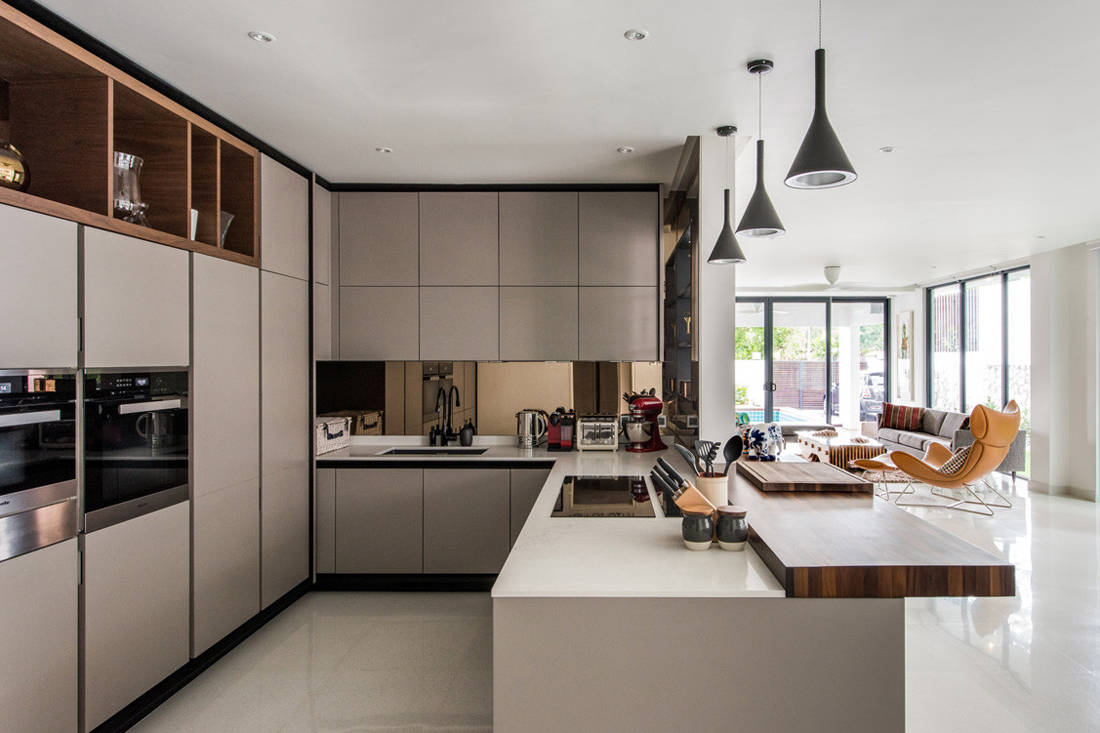5 Tips to Make Your Small Kitchen Feel Large
New York–based interior designer Jenny Wolf is known for refined interiors that have relaxing qualities and offer a sense of calm in the bustling city. When involved in a full renovation, Wolf often finds that she is tasked with creating kitchens for everyone from amateur chefs to seasoned entertainers—and space is usually the element that it is lacking.
“I believe people love to congregate in the kitchen, even if it is tiny,” she says. “But I only design what is right for each area while always keeping in mind my client’s needs. You can work wonders in a small space with the proper balance of functionality and materials.” Because of her tried-and-true design tips, and because she delights in tricking the eye, it might be more accurate to call her a master of kitchen illusion. Read on for some of Wolf’s ideas for creating a dream kitchen in a less than desirable amount of space.
Consider a Mirrored Backsplash

“Mirrors are especially useful when there is no, or minimal, natural light in a kitchen,” says Wolf. “They can help to open the space up and bounce light around.” The designer has been known to use antique mirror tiles instead of traditional tile for a backsplash, or she’ll place an antique framed mirror above a stove. “It’s better to look at than a plain wall,” she says.
Light Colors Help to Visually Expand the Space

“The lighter the kitchen, the larger it can feel,” says Wolf. “Sometimes, if there is a good view out a window, I like to focus on bringing the outdoors in and using nature to dictate the palette.” Keeping an especially light palette on countertops, backsplashes, walls, and millwork also helps a small kitchen feel more open.
Open Shelving Keeps the Space Light and Airy

“This has not always been an easy sell, but in the end, all of my clients that I convinced could not be happier,” says Wolf about the concept. “Open shelves are extremely functional and make it so much easier to access dishes and glasses.” Wolf also says you should think about your kitchen architecturally, as it doesn’t always make sense to have upper cabinets. “Especially if the ceilings are ten feet high.”
Use Pattern in Unexpected Places

Wolf says the floor—an often overlooked area of a kitchen—is the perfect place for a high-impact design element. “A patterned floor will give the illusion of a greater expanse to the space.” Wolf likes mixing it up with either chevron or herringbone wood-floor patterns or even using hand-painted cement tile for a more bohemian feel.
Do not Skimp on Lighting

“You can never have enough lighting in a kitchen, and I always down-light with decorative fixtures over the island and prep station,” she says, maintaining that good lighting, and plenty of it, is incredibly important while cooking. “Use flush or recessed fixtures, and don’t forget about under-cabinet lighting.”

Comments
Post a Comment